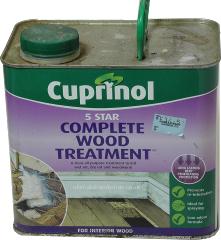Dry rot is far more serious than wet rot or woodworm damage and only ever occurs indoors. It's spores can spread through masonry or metal, behind the plaster and affect wood that is a long distance away from the original source of the outbreak. Dry rot likes damp timber whereas wet rot likes wet timber. Dry rot is a fungus and has millions of spores that are easily spread, infected timber normally needs removing from the property and burning, whilst the masonry needs treating to prevent a re-occurrence.

Damp unventilated conditions are perfect for dry rot, early growth forms white fluffy strands, which later thicken and resemble cotton wool. The fruiting body that develops resembles a large, pancake like lichen. Dry rot sucks all of the moisture from the timber to feed and in doing so completely destroys the timber. Although it can travel through masonry and metal it is not affected by it and merely needs treating to kill the spores!
A friend of mine treated a building that was infected by setting fire to the fungi on the walls, I don't recommend that method though as you could easily do more damage!

Treating dry rot is sometimes best left to the professionals but, don't use the first company that you get advice from, get at least three quotes and see exactly what each firm has to say about the problem!
Recently a summer house was found to be covered on the inside with dry rot, the roof had been leaking at some point and there was no ventilation. This was easily remedied by fixing the leak, then clearing off all of the dry rot (wearing masks and gloves). Vents were then fitted which improved air flow and the summer house was then treated with Cuprinol 5* wood treatment.

Cuprinol's 5 star wood treatment can be used to treat dry rot, wet rot and also woodworm. It's important that you read the instructions before using products like this as some of them can be harmful.



